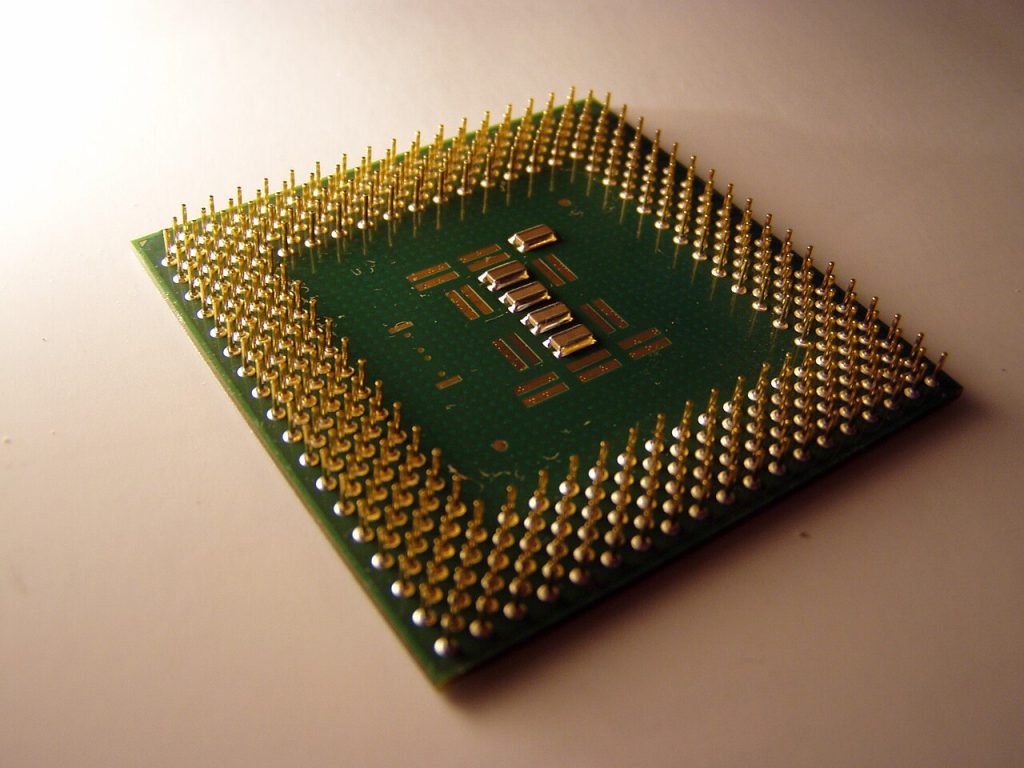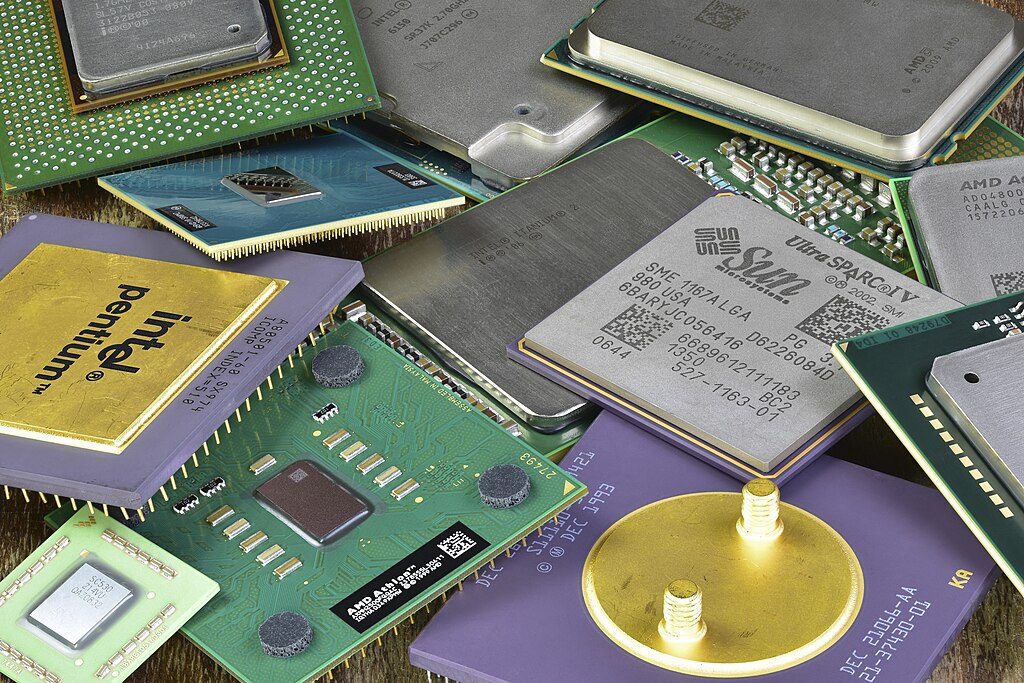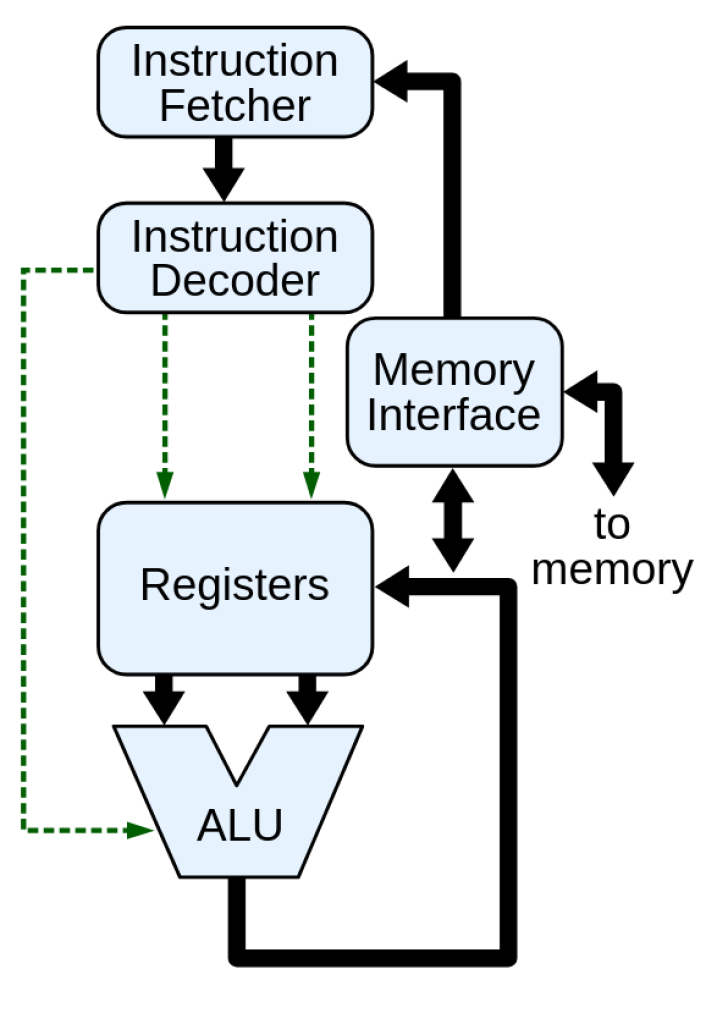CPU
Welcome to our deep dive into CPUs. Whether you’re a total newbie piecing together your first budget rig or a seasoned overclocker chasing those extra frames per second, we’ve got you covered. Think of this as chatting with a buddy who’s built way too many PCs over a steaming cup of coffee—I’ll keep it fun, throw in some laughs, but we’ll dig deep into the nitty-gritty without skimping on the facts. Let’s crank up the clock speeds and get started!
Contents
Introduction
So, what exactly is a CPU? Short for Central Processing Unit, it’s basically the brain of your computer. This little (or sometimes not-so-little) chip handles all the heavy lifting: executing instructions from your software, crunching numbers for everything from browsing cat videos to rendering complex 3D models, and keeping your system ticking along smoothly. In a PC setup, the CPU is the star player—without it, your fancy graphics card and speedy RAM are just expensive paperweights. Why does it matter? Well, a good CPU can make your games run buttery smooth, speed up video editing, or even handle AI tasks like a champ. Fun fact: The first true CPUs were massive beasts that filled entire rooms, but today’s versions pack billions of transistors into something smaller than a credit card. Imagine trying to game on something the size of your fridge—talk about a hot mess!

 – Credit: Wikimedia Commons
– Credit: Wikimedia CommonsHistory
The CPU’s story is like a tech evolution epic—starting from clunky room-sized machines to the pocket-sized powerhouses we have today. Back in the 1940s, early computers like ENIAC were “fixed-program” monsters that needed physical rewiring for every new task. No thanks! The big breakthrough came in 1945 with John von Neumann’s stored-program concept, which let machines load instructions from memory. This paved the way for the EDVAC in 1949 and the Manchester Baby in 1948, the world’s first stored-program computer.
Fast-forward to the 1950s and ’60s: Transistors replaced vacuum tubes, making CPUs smaller, faster, and less prone to burning out (literally). IBM’s System/360 in 1964 was a game-changer, using microcode for compatibility across machines. Then came integrated circuits (ICs) in the ’70s, shrinking things further. Intel dropped the bombshell with the 4004 microprocessor in 1971—the first single-chip CPU, originally designed for calculators but kickstarting the PC revolution. By the ’80s, we had the Intel 8086 powering IBM PCs, and the ’90s brought multi-core madness with chips like the PowerPC.
Today? We’re in the era of multi-core beasts from Intel and AMD, with billions of transistors and features like built-in AI accelerators. AMD’s Ryzen series shook things up in 2017, challenging Intel’s dominance and sparking a core-count arms race. As of 2025, AMD’s Ryzen 9800X3D is dominating gaming, with leaks suggesting Intel’s Nova Lake in 2026 might fight back. It’s wild how we’ve gone from one core struggling with basic math to 64-core monsters handling virtual reality like it’s no big deal. Pro tip: If time travel exists, don’t bet against Moore’s Law—it predicted this explosion in transistor density way back in 1965.

 – Credit: Wikimedia Commons
– Credit: Wikimedia CommonsTypes/Variations
CPUs come in all flavors, like ice cream—but picking the wrong one can leave you with brain freeze instead of bliss. Broadly, they’re categorized by use: desktop, laptop/mobile, server, and embedded (think smart fridges). For PC builders, desktop CPUs from Intel and AMD are the go-to.
- Intel Core Series: From budget-friendly i3s for everyday tasks to beastly i9s for gaming and content creation. Pros: Excellent single-thread performance, integrated graphics in many models. Cons: Can run hot and pricey. The “K” variants (e.g., Core Ultra 9 285K) are unlocked for overclocking—perfect for speed demons, but they guzzle power.
- AMD Ryzen Series: Ryzen 3 for entry-level, up to Ryzen 9 for pros. AMD shines with multi-core prowess (hello, 64-core Threadripper!) and efficiency. Their X3D chips (like Ryzen 7 9800X3D) add massive 3D V-Cache for gaming dominance—up to 59% faster in titles like Cyberpunk 2077. Pros: Better value, long platform support (AM4 lasted years). Cons: Sometimes lags in single-thread tasks compared to Intel.
- Other Variations: Laptop CPUs prioritize power efficiency (e.g., Intel’s U-series or AMD’s HS), while servers like Intel Xeon or AMD EPYC focus on reliability and core count for data centers. Arm-based CPUs (e.g., in phones) are rising in PCs via Qualcomm Snapdragon, but they’re not mainstream yet.
When to choose? Gamers, grab an X3D or high-end i9 for those FPS boosts. Creators? Go multi-core Ryzen. Budget? A Ryzen 5 or i5 handles most things without breaking the bank. Major brands: Intel (market leader), AMD (value king), with niche players like Qualcomm dipping in.
Here’s a quick comparison table:
| Type | Pros | Cons | Best For | Major Brands |
|---|---|---|---|---|
| Desktop | High performance, upgradable | Power-hungry, needs cooling | Gaming, editing | Intel, AMD |
| Laptop | Efficient, portable | Lower power, harder to upgrade | Mobility, light work | Intel, AMD |
| Server | Reliable, many cores | Expensive, enterprise-focused | Data centers, rendering | Intel Xeon, AMD EPYC |
Humor alert: Don’t buy a server CPU for your gaming rig unless you want to host a LAN party for the entire neighborhood—your electric bill will thank you not to.
How It Works
Alright, let’s pop the hood. At its core (pun intended), a CPU follows the fetch-decode-execute cycle: It fetches an instruction from memory, decodes what it means, and executes it using its arithmetic logic unit (ALU) for math and logic ops. Simple analogy: Imagine the CPU as a chef—memory is the recipe book, fetch grabs the next step, decode figures out “chop onions,” and execute does the chopping.
Deeper dive: Modern CPUs have multiple cores (like mini-CPUs inside one chip) for parallel tasks, threads for multitasking, and caches (L1, L2, L3) as super-fast memory buffers to avoid waiting on slower RAM. The control unit orchestrates everything, synced by a clock speed (GHz) that dictates how many cycles per second. Pipelining speeds things up by overlapping steps, but branch predictions can miss, causing stalls—like guessing wrong in a choose-your-own-adventure book.
For experts: Architectures vary—x86 for Intel/AMD, Arm for efficiency. Features like hyper-threading (Intel) or SMT (AMD) let one core handle two threads. And don’t forget the billions of transistors flipping on/off via electricity to make it all happen. It’s mind-blowing engineering!

 – Credit: Wikimedia Commons
– Credit: Wikimedia CommonsCommon Pitfalls
Building with CPUs? Watch out—these mistakes can turn your dream PC into a nightmare. First, socket mismatches: Slamming an AMD Ryzen into an Intel LGA socket is like forcing a square peg into a round hole—disaster! Always check (e.g., AM5 for new Ryzen, LGA 1700 for older Intel).
Overheating is another killer: Forget thermal paste, and your CPU hits 100°C faster than you can say “blue screen.” Or poor airflow—don’t be that builder who stuffs cables like a hoarder, blocking fans. Bending pins during install? Heartbreaking and often fatal; handle by edges only.
Other gotchas: Buying fakes from shady sites (stick to reputable sellers), ignoring power draw (your PSU might cry), or overclocking without cooling—turning your CPU into a space heater. Recent chatter highlights instability in Intel’s 13th/14th gen chips, pushing folks to stable AMD options. Humor time: Don’t be the person who installs a fancy RGB CPU cooler upside down; it’ll look cool, but your temps won’t!
Tips and Pointers
Selecting a CPU? Match it to your needs—gamers prioritize clock speed and cache, creators want cores. Budget? Ryzen offers bang-for-buck; eco-friendly? Look for efficient chips like AMD’s. Installation: Ground yourself, align arrows/notches, apply pea-sized thermal paste, secure cooler firmly.
Maintenance: Dust fans regularly, monitor temps with tools like HWMonitor. Upgrades? Check motherboard BIOS for support. Pro tip: AMD’s long AM4/AM5 support means fewer full rebuilds—saving cash for more games! In 2025, keep an eye on AMD’s Strix Halo APUs for integrated graphics that rival discrete GPUs.
Compatibility Considerations
CPUs don’t play alone—they need harmony with other parts. Key: Socket type (e.g., AMD’s AM5 vs. Intel’s upcoming LGA 1851). Chipsets matter too—Intel’s Z-series for overclocking, B-series for basics. RAM? DDR4/5 compatibility varies; fast RAM boosts Ryzen infinity fabric.
Cooling: High-TDP CPUs like Ryzen 9 need robust coolers. GPUs? Ensure CPU doesn’t bottleneck (e.g., pair high-end GPU with strong CPU for 4K gaming). Mismatches: Old BIOS might not recognize new CPUs—update first. Avoid: Mixing generations without checks, or skimping on PSU for power-hungry chips.
Loved this? Level up with our pages on:
- Motherboards (your CPU’s best friend)
- RAM (for that speedy teamwork)
- Cooling Systems (keep things chill)
- GPUs (the visual powerhouse duo)
- PC Building Guides (put it all together)
- Overclocking (push limits safely)
References
- The History of Central Processing Unit (CPU) – IBM
- Computer Processing Unit (CPU) History – VarTech Systems
- History of general-purpose CPUs – Wikipedia
- The Complete Computer Processor History – HardwareCentral.com
- Central processing unit – Wikipedia
- Central Processing Unit (CPU) – GeeksforGeeks
- Computer Processor History
- CPU History – The CPU Museum – Life Cycle of the CPU
- History of Processors – CSE 490H History Exhibit – Washington
- A Guide to Different Types of Computer Processors | Crucial.com
- What Are the Different Types of Computer Processors? – Best Buy
- Types of central processing units (CPUs) – IBM
- All about processors (CPUs) – Microsoft Support
- What is a CPU | CPU Types and Functions | Lenovo US
- Definition of PC CPU models – PCMag
- My detailed CPU guide : r/buildapc – Reddit
- What common mistakes should a person building a PC for the first …
- Common PC Building Mistakes to Avoid – HYTE
- I’ve built hundreds of PCs. These are the mistakes I’ve regretted most
- What seemingly minor PC building mistakes can actually destroy …
- Gaming PC Build Mistakes: A Guide to Avoiding Common Pitfalls
- 10 Common Mistakes Beginners Make When Building Their Own PC
- PC Building Mistakes To Avoid [14 Common Mistakes] – Tech4Gamers
- PC Builder: Part Picker & Compatibility Checker
- Windows Processor Requirements | Microsoft Learn
- How to Match a CPU to Motherboard: A Comprehensive Guide
- The Ultimate Guide to Motherboard and CPU Compatibility
- The Ultimate Guide to Intel CPU and Operating System Compatibility
- How to Tell What CPU is Compatible with Your Motherboard
- How to choose a CPU? : r/buildapc – Reddit
- Compatibility check between parts? – PCPartPicker
- How to Check CPU Compatibility with Motherboard, RAM & GPU?
- How does a CPU Work | Lenovo US
- The “Basics” | Putting the “You” in CPU
- What is a CPU? – Central Processing Unit Explained – AWS
- How The Computer Works: The CPU and Memory
- The Best CPU for Gaming in 2025 | Tom’s Hardware
- The Best CPUs for 2025 – PCMag
- Best CPUs in 2025(FPS) : r/PcBuild – Reddit
- Best Processors – September 2025 – UL Benchmarks
- CPU Benchmarks and Hierarchy 2025: CPU Rankings
- The Best CPUs: Productivity and Gaming – TechSpot
- Re:Best Intel CPU for Smooth 1440p Gaming in 2025?
- What are the best CPU and GPU combinations for building a high …
- GameGPU – @GameGPU_com on X
- 포시포시 – @harukaze5719 on X
- GameGPU – @GameGPU_com on X
- Beth Kindig – @Beth_Kindig on X
- J7ck – @J7ck_R6 on X
- Super – @SuperDuperCycle on X
- Grummz – @Grummz on X
- TCMFGames – @TCMF2 on X
- NewMaxx – @NewMaxxSSD on X
- Daniel Romero – @HyperTechInvest on X
- Battered Boost – @BoostiBoi13 on X
- VideoCardz.com – @VideoCardz on X
- YouPulseX – @YouPulseX on X
- Anthony Garreffa ⭐⭐⭐ – @anthony256 on X
- .h∀ck//RX-78-2/𒌐Berserk.ΞXΞ – @lord_shield on X
- The Collector’s guide to Vintage Intel Microchips – The CPU Shack [PDF]
- File:Computer chips circuits boards.jpg – Wikimedia Commons
There you have it—your ultimate CPU guide! Now go forth and build that epic setup. Remember, the only bad CPU is the one gathering dust in a drawer. Happy computing, and may your frames be high and your temps low! 🚀
